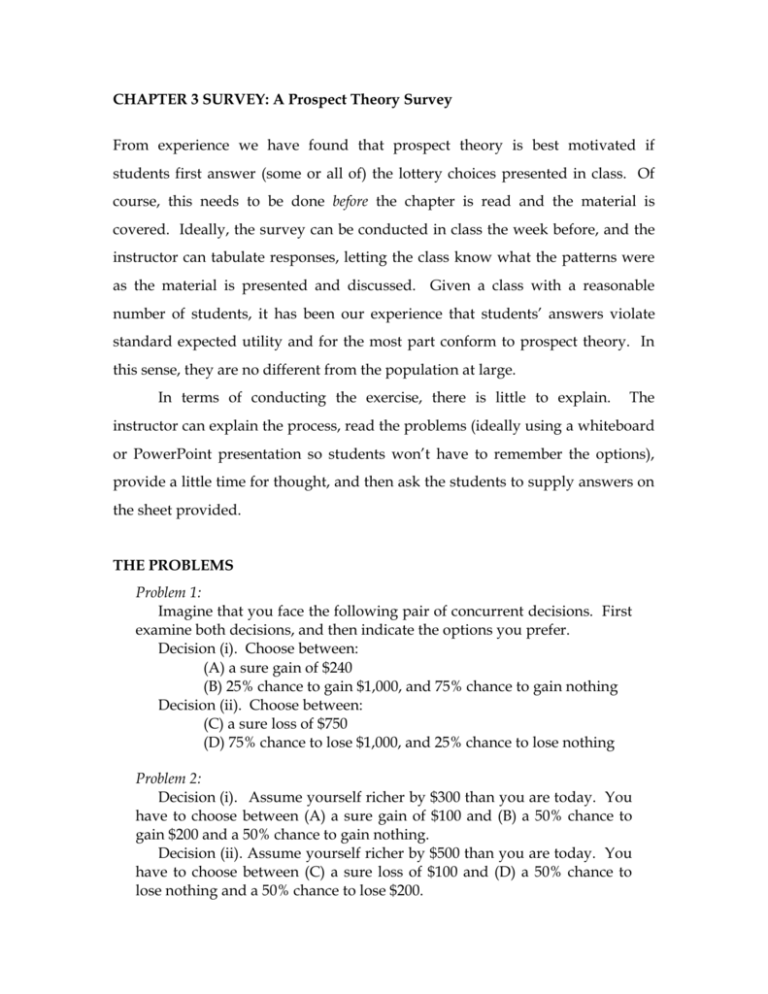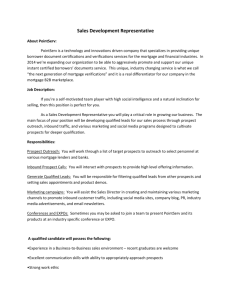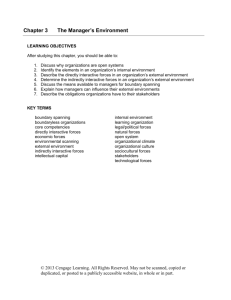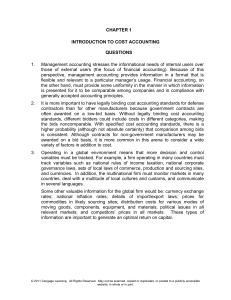
CHAPTER 3 SURVEY: A Prospect Theory Survey
From experience we have found that prospect theory is best motivated if
students first answer (some or all of) the lottery choices presented in class. Of
course, this needs to be done before the chapter is read and the material is
covered. Ideally, the survey can be conducted in class the week before, and the
instructor can tabulate responses, letting the class know what the patterns were
as the material is presented and discussed. Given a class with a reasonable
number of students, it has been our experience that students’ answers violate
standard expected utility and for the most part conform to prospect theory. In
this sense, they are no different from the population at large.
In terms of conducting the exercise, there is little to explain.
The
instructor can explain the process, read the problems (ideally using a whiteboard
or PowerPoint presentation so students won’t have to remember the options),
provide a little time for thought, and then ask the students to supply answers on
the sheet provided.
THE PROBLEMS
Problem 1:
Imagine that you face the following pair of concurrent decisions. First
examine both decisions, and then indicate the options you prefer.
Decision (i). Choose between:
(A) a sure gain of $240
(B) 25% chance to gain $1,000, and 75% chance to gain nothing
Decision (ii). Choose between:
(C) a sure loss of $750
(D) 75% chance to lose $1,000, and 25% chance to lose nothing
Problem 2:
Decision (i). Assume yourself richer by $300 than you are today. You
have to choose between (A) a sure gain of $100 and (B) a 50% chance to
gain $200 and a 50% chance to gain nothing.
Decision (ii). Assume yourself richer by $500 than you are today. You
have to choose between (C) a sure loss of $100 and (D) a 50% chance to
lose nothing and a 50% chance to lose $200.
2|Page
Problem 3:
If you had to choose between two prospects, A and B, what value of x
would make you indifferent:
(A) The status quo (a non-prospect)
(B) 50% chance to win $x, and a 50% chance to lose $25
Problem 4 (Lottery):
Choose between two prospects, A and B:
(A) 1 in 1,000 chance of getting $5,000
(B) a sure gain of $5
Problem 5 (Insurance):
Choose between two prospects, A and B:
(A) 1 in 1,000 chance of losing $5,000
(B) a sure loss of $5
Problem 6:
Decision (i). Choose between two prospects, A and B:
(A) 80% chance of getting $4,000
(B) a sure gain of $3,000
Decision (ii). Choose between two prospects, C and D:
(C) 20% chance of getting $4,000
(D) 25% chance of getting $3,000
Problem 7:
Decision (i). Choose between two prospects, A and B:
(A) 45% chance of getting $6,000
(B) 90% chance of getting $3,000
Decision (ii). Choose between two prospects, C and D:
(C) 0.1% chance of getting $6,000
(D) 0.2% chance of getting $3,000
Problem 8(Survival frame):
Imagine that the U.S. is preparing for the outbreak of an unusual Asian
disease, which is expected to kill 600 people. Two alternative programs to
combat the disease have been proposed. Assume that the exact scientific
estimates of the consequences of the programs are as follows:
If Program A is adopted, 200 people will be saved.
If Program B is adopted, there is a 1/3 probability that 600 people will
be saved, and a 2/3 probability that no people will be saved.
Which of the two programs would you favor?
©2010 Cengage Learning. All Rights Reserved. May not be scanned, copied or
duplicated, or posted to a publicly available website, in whole or in part.
3|Page
Problem 8(Mortality frame):
Imagine that the U.S. is preparing for the outbreak of an unusual Asian
disease, which is expected to kill 600 people. Two alternative programs to
combat the disease have been proposed. Assume that the exact scientific
estimates of the consequences of the programs are as follows:
If Program C is adopted 400 people will die.
If program D is adopted that is a 1/3 probability that nobody will die,
and a 2/3 probability that 600 people will die.
Which of the two programs do you favor?
Problem 9:
Imagine that you have decided to see a play where admission is $10
per ticket. As you enter the theater you discover that you have lost a $10
bill. Would you still pay $10 for a ticket to the play?
Problem 10:
Imagine that you have decided to see a play and paid the admission
price of $10 per ticket. As you enter the theater you discover that you
have lost the ticket. The seat was not marked and the ticket cannot be
recovered. Would you pay $10 for another ticket?
©2010 Cengage Learning. All Rights Reserved. May not be scanned, copied or
duplicated, or posted to a publicly available website, in whole or in part.
4|Page
STUDENT ANSWER SHEET
Circle your preferred choices.
1.
A
B
and
C
D
6.
A
B
and
C
D
2.
A
B
and
C
D
7.
A
B
and
C
D
3.
A
B
8.
A
B
4.
A
B
9.
C
D
5.
A
B
10.
Yes
No
©2010 Cengage Learning. All Rights Reserved. May not be scanned, copied or
duplicated, or posted to a publicly available website, in whole or in part.












